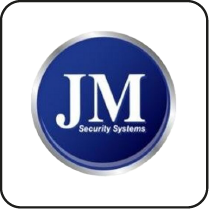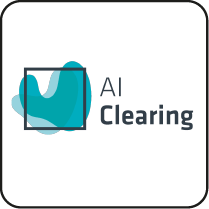Lifecycle Perspective within ISO 14001
What is the Lifecycle Perspective in ISO 14001?
The lifecycle perspective in ISO 14001 involves evaluating the environmental impacts of a product or service from its inception to its disposal. This comprehensive approach includes stages such as raw material acquisition, design, production, transportation, use, and end-of-life management. By adopting a lifecycle perspective, organisations can identify and mitigate environmental impacts at each stage, ensuring a holistic approach to environmental management.
Why is the Lifecycle Perspective Important in Environmental Management?
Integrating a lifecycle perspective allows organisations to address environmental impacts comprehensively. This approach helps identify potential environmental risks and opportunities for improvement that might be overlooked if only focusing on individual stages. It promotes sustainable practices, resource efficiency, and pollution prevention, aligning with the core principles of ISO 14001 [Clause 6.1.2].
How Does ISO 14001 Integrate Lifecycle Thinking?
ISO 14001 integrates lifecycle thinking by requiring organisations to consider the environmental aspects and impacts of their activities, products, and services throughout their lifecycle. This includes evaluating significant environmental aspects, setting objectives, and implementing controls to manage these aspects effectively [Clause 6.1.2]. The standard also emphasises the importance of continuous improvement and performance evaluation [Clause 10.3].
What are the Key Benefits of Adopting a Lifecycle Perspective?
Adopting a lifecycle perspective offers several benefits:
- Enhanced Environmental Performance: By addressing impacts at all stages, organisations can significantly reduce their environmental footprint.
- Resource Efficiency: Optimising resource use throughout the lifecycle leads to cost savings and sustainability.
- Regulatory Compliance: Ensures compliance with environmental regulations and standards.
- Stakeholder Trust: Demonstrates a commitment to sustainability, enhancing reputation and stakeholder trust.
Introducing ISMS.online and How It Helps
ISMS.online is a comprehensive platform that supports organisations in implementing and maintaining their Environmental Management System (EMS) in line with ISO 14001. Our platform offers tools for managing environmental aspects, tracking compliance obligations, and facilitating continuous improvement. By integrating lifecycle thinking into your EMS, ISMS.online helps you achieve sustainable practices and regulatory compliance, ensuring long-term environmental performance.
Book a demoUnderstanding Environmental Aspects
What are Environmental Aspects in the Context of ISO 14001?
Environmental aspects are elements of an organisation’s activities, products, or services that can interact with the environment. These interactions can result in either positive or negative environmental impacts. ISO 14001 requires organisations to identify and evaluate these aspects to manage their environmental performance effectively [Clause 6.1.2].
How Do Environmental Aspects Impact Lifecycle Perspective?
Environmental aspects significantly influence the lifecycle perspective by highlighting the potential environmental impacts at each stage of a product or service’s lifecycle. By understanding these aspects, organisations can implement strategies to mitigate negative impacts and enhance positive ones, ensuring a comprehensive approach to environmental management [Clause 6.1.2].
What Methods Are Used to Identify Significant Environmental Aspects?
Organisations use various methods to identify significant environmental aspects, including:
- Environmental Audits: Regular audits help identify aspects that may have been overlooked.
- Lifecycle Assessments (LCA): Evaluating environmental impacts from raw material acquisition to disposal.
- Stakeholder Feedback: Engaging with stakeholders to understand their concerns and insights.
- Risk Assessments: Identifying and prioritising aspects based on their potential impact and likelihood [Clause 6.1.2].
How Does ISMS.online Help in Managing Environmental Aspects?
ISMS.online provides robust tools to help organisations manage their environmental aspects effectively. Our platform offers:
- Environmental Asset Tracking: Monitor and manage assets linked to environmental aspects.
- Compliance Tracking: Ensure adherence to legal and voluntary obligations.
- Lifecycle Assessment Tools: Facilitate comprehensive evaluations of environmental impacts.
- Stakeholder Management: Engage and manage stakeholder feedback to align with environmental goals.
By using ISMS.online, organisations can streamline their environmental management processes, ensuring they meet ISO 14001 requirements and achieve sustainable practices.

An 81% Headstart from day one
We’ve done the hard work for you, giving you an 81% Headstart from the moment you log on. All you have to do is fill in the blanks.

Raw Material Acquisition
Considerations in Raw Material Acquisition
Acquiring raw materials involves several key considerations to ensure sustainability and compliance with ISO 14001. Organisations must evaluate the environmental impacts of sourcing materials, including resource depletion, habitat destruction, and pollution. They should also consider the social and economic implications, such as fair labour practices and community impacts.
Impact on Lifecycle Perspective
Raw material sourcing significantly affects the lifecycle perspective by setting the foundation for the entire product lifecycle. Sustainable sourcing practices can reduce negative environmental impacts and enhance resource efficiency. Conversely, unsustainable practices can lead to increased environmental degradation and higher lifecycle costs [Clause 6.1.2].
Best Practices for Sustainable Raw Material Acquisition
- Supplier Assessment: Evaluate suppliers based on their environmental practices and certifications.
- Sustainable Sourcing: Prioritise materials that are renewable, recyclable, or have lower environmental footprints.
- Transparency and Traceability: Implement systems to track the origin and environmental impact of raw materials.
- Stakeholder Engagement: Collaborate with stakeholders to ensure sustainable practices and address concerns.
- Lifecycle Assessment (LCA): Conduct LCAs to understand the environmental impacts of raw materials from extraction to disposal.
Ensuring Compliance with ISO 14001
To ensure compliance with ISO 14001 during raw material acquisition, organisations should:
- Identify and Evaluate Environmental Aspects: Assess the environmental aspects related to raw material sourcing and implement controls to mitigate negative impacts [Clause 6.1.2].
- Set Objectives and Targets: Establish measurable objectives and targets for sustainable sourcing and monitor progress [Clause 6.2].
- Document and Communicate: Maintain documented information on sourcing practices and communicate requirements to suppliers [Clause 7.5].
- Continuous Improvement: Regularly review and improve sourcing practices to enhance environmental performance [Clause 10.3].
ISMS.online supports organisations in managing these processes by providing tools for supplier assessment, lifecycle assessment, and compliance tracking, ensuring sustainable and compliant raw material acquisition.
Product Design and Development
How Does Product Design Influence Environmental Impact?
Product design significantly influences environmental impact by determining the materials used, the manufacturing processes, and the product’s lifecycle. Sustainable design choices can reduce resource consumption, minimise waste, and lower emissions. Conversely, poor design can lead to increased environmental degradation and inefficiency.
What Are Eco-Design Principles and How Are They Applied?
Eco-design principles focus on minimising environmental impacts throughout a product’s lifecycle. Key principles include:
- Material Selection: Choosing renewable, recyclable, or biodegradable materials.
- Energy Efficiency: Designing products that consume less energy during use.
- Durability and Longevity: Creating products that last longer and require fewer resources for maintenance.
- End-of-Life Management: Ensuring products can be easily disassembled, recycled, or safely disposed of.
These principles are applied by integrating environmental considerations into the design process, conducting lifecycle assessments, and setting sustainability targets [Clause 6.1.2].
How Can Lifecycle Thinking Be Integrated into Product Development?
Integrating lifecycle thinking into product development involves evaluating the environmental impacts at each stage, from raw material acquisition to disposal. This can be achieved by:
- Conducting Lifecycle Assessments (LCA): Assessing environmental impacts from cradle to grave.
- Setting Environmental Objectives: Establishing measurable goals for reducing impacts.
- Collaborating with Stakeholders: Engaging suppliers, customers, and other stakeholders to ensure sustainable practices.
- Continuous Improvement: Regularly reviewing and improving design processes to enhance sustainability [Clause 10.3].
What Role Does ISMS.online Play in Supporting Eco-Design Initiatives?
ISMS.online supports eco-design initiatives by providing tools for managing environmental aspects, conducting lifecycle assessments, and tracking compliance obligations. Our platform offers:
- Lifecycle Assessment Tools: Facilitate comprehensive evaluations of environmental impacts.
- Environmental Asset Tracking: Monitor and manage assets linked to environmental aspects.
- Compliance Tracking: Ensure adherence to legal and voluntary obligations.
- Stakeholder Management: Engage and manage stakeholder feedback to align with environmental goals.
By using ISMS.online, organisations can streamline their eco-design processes, ensuring they meet ISO 14001 requirements and achieve sustainable practices.

Free yourself from a mountain of spreadsheets
Embed, expand and scale your compliance, without the mess. IO gives you the resilience and confidence to grow securely.

Production and Manufacturing Processes
Environmental Impacts of Production Processes
Production processes can significantly impact the environment through resource consumption, emissions, waste generation, and energy use. These impacts include air and water pollution, greenhouse gas emissions, and habitat destruction. Identifying and mitigating these impacts is essential for sustainable manufacturing.
Minimising Environmental Impacts During Manufacturing
Organisations can minimise environmental impacts by:
- Implementing Cleaner Production Techniques: Adopting technologies that reduce emissions and waste.
- Energy Efficiency: Utilising energy-efficient machinery and renewable energy sources.
- Waste Reduction: Implementing waste management practices such as recycling and reusing materials.
- Process Optimization: Streamlining processes to reduce resource consumption and emissions [Clause 8.1].
Strategies to Enhance Resource Efficiency
Enhancing resource efficiency involves:
- Lean Manufacturing: Reducing waste and improving process efficiency.
- Material Substitution: Using sustainable and less harmful materials.
- Water Conservation: Implementing water-saving technologies and practices.
- Circular Economy Practices: Designing products for reuse, recycling, and remanufacturing [Clause 6.1.2].
ISO 14001 Guidance on Controlling Production Processes
ISO 14001 provides a framework for controlling production processes through:
- Operational Control: Establishing procedures to manage significant environmental aspects [Clause 8.1].
- Lifecycle Perspective: Considering environmental impacts from raw material acquisition to disposal [Clause 6.1.2].
- Continuous Improvement: Regularly reviewing and improving processes to enhance environmental performance [Clause 10.3].
- Compliance Obligations: Ensuring adherence to legal and other requirements [Clause 6.1.3].
ISMS.online supports these efforts by offering tools for monitoring environmental aspects, tracking compliance, and facilitating continuous improvement, ensuring organisations meet ISO 14001 requirements and achieve sustainable manufacturing practices.
Transportation and Logistics
How Does Transportation Affect the Lifecycle Perspective?
Transportation significantly impacts the lifecycle perspective by contributing to greenhouse gas emissions, air pollution, and energy consumption. The movement of raw materials, finished products, and waste materials can affect an organisation’s overall environmental footprint. Evaluating transportation impacts allows organisations to identify opportunities to reduce emissions and enhance sustainability [Clause 6.1.2].
Environmental Considerations in Logistics Management
Effective logistics management involves several environmental considerations:
- Fuel Efficiency: Utilising fuel-efficient vehicles and alternative fuels to reduce emissions.
- Route Optimization: Planning efficient routes to minimise travel distance and fuel consumption.
- Load Optimization: Maximising vehicle load capacity to reduce the number of trips.
- Modal Shift: Switching to more sustainable transportation modes, such as rail or sea, where feasible.
- Packaging: Using eco-friendly packaging materials to reduce waste and improve recyclability.
Reducing the Environmental Footprint of Transportation
Organisations can implement various strategies to reduce the environmental footprint of transportation:
- Adopting Green Technologies: Utilising electric or hybrid vehicles and renewable energy sources.
- Collaborative Logistics: Partnering with other companies to share transportation resources and reduce empty runs.
- Driver Training: Educating drivers on eco-driving techniques to improve fuel efficiency.
- Supply Chain Optimization: Streamlining supply chain processes to reduce transportation needs and improve efficiency.
- Lifecycle Assessment (LCA): Conducting LCAs to identify and mitigate transportation-related impacts [Clause 6.1.2].
Compliance Requirements for Transportation Under ISO 14001
ISO 14001 requires organisations to identify and manage significant environmental aspects related to transportation. Compliance involves:
- Environmental Aspect Evaluation: Assessing the environmental impacts of transportation activities and implementing controls to mitigate negative impacts [Clause 6.1.2].
- Setting Objectives and Targets: Establishing measurable goals for reducing transportation-related impacts and monitoring progress [Clause 6.2].
- Documented Information: Maintaining records of transportation practices and compliance with legal requirements [Clause 7.5].
- Continuous Improvement: Regularly reviewing and improving transportation processes to enhance environmental performance [Clause 10.3].
ISMS.online supports organisations in managing transportation impacts by providing tools for environmental aspect evaluation, compliance tracking, and continuous improvement, ensuring sustainable and compliant logistics management.

Manage all your compliance, all in one place
ISMS.online supports over 100 standards and regulations, giving you a single platform for all your compliance needs.

Use Phase and Consumer Impact
How Does the Use Phase Contribute to the Overall Environmental Impact?
The use phase of a product or service can significantly impact the environment through energy consumption, emissions, and resource use. For instance, electronic devices consume electricity, contributing to greenhouse gas emissions, while chemicals in cleaning products can lead to water pollution. Understanding these impacts is essential for managing the lifecycle perspective effectively [Clause 6.1.2].
Key Considerations for Managing Environmental Impacts During Use
To manage environmental impacts during the use phase, organisations should consider:
- Energy Efficiency: Promoting products that consume less energy.
- Durability: Designing products to last longer, reducing the need for replacements.
- Maintenance: Providing guidelines for proper maintenance to ensure optimal performance and minimal environmental impact.
- User Behaviour: Educating consumers on sustainable practices, such as energy-saving tips and proper disposal methods.
Promoting Sustainable Consumption Practices
Organisations can promote sustainable consumption by:
- Eco-Labelling: Providing clear information about the environmental benefits of products.
- Incentives: Offering incentives for consumers to choose eco-friendly products, such as discounts or rebates.
- Awareness Campaigns: Running campaigns to educate consumers about the environmental impact of their choices and encouraging sustainable behaviour.
- Product Take-Back Programmes: Implementing programmes that allow consumers to return products for recycling or proper disposal.
How ISMS.online Facilitates Monitoring and Managing Use Phase Impacts
ISMS.online provides tools to monitor and manage environmental impacts during the use phase by:
- Lifecycle Assessment Tools: Enabling comprehensive evaluations of environmental impacts throughout the product lifecycle.
- Compliance Tracking: Ensuring adherence to legal and voluntary obligations related to product use.
- Stakeholder Management: Engaging with consumers to gather feedback and promote sustainable practices.
- Performance Monitoring: Tracking the effectiveness of initiatives aimed at reducing environmental impacts during the use phase.
By using ISMS.online, organisations can ensure they meet ISO 14001 requirements, enhance their sustainability practices, and effectively manage the environmental impacts of their products during the use phase.
Further Reading
End-of-Life Management
Challenges Associated with End-of-Life Management
End-of-life management poses several challenges, including the safe disposal of hazardous materials, the complexity of recycling processes, and the need for effective waste segregation. Organisations must also navigate regulatory requirements and manage costs associated with end-of-life processes.
Planning for Responsible Disposal or Recycling
Organisations can plan for responsible disposal or recycling by implementing comprehensive waste management strategies. This includes conducting waste audits, establishing recycling programmes, and collaborating with certified waste management partners. Additionally, designing products for disassembly can facilitate easier recycling and disposal.
Best Practices for End-of-Life Management Under ISO 14001
- Waste Hierarchy: Prioritise waste prevention, followed by reuse, recycling, recovery, and disposal.
- Lifecycle Assessment (LCA): Evaluate environmental impacts from cradle to grave to identify improvement areas [Clause 6.1.2].
- Extended Producer Responsibility (EPR): Take responsibility for the entire lifecycle of products, including take-back programmes.
- Stakeholder Engagement: Collaborate with stakeholders to develop sustainable end-of-life solutions.
- Documentation and Monitoring: Maintain records of waste management practices and monitor compliance with legal requirements [Clause 7.5].
Lifecycle Perspective Influence on Waste Management Strategies
Adopting a lifecycle perspective influences waste management strategies by encouraging organisations to consider the environmental impacts of products from inception to disposal. This holistic approach promotes designing for sustainability, reducing waste generation, and enhancing resource efficiency. By integrating lifecycle thinking, organisations can develop more effective and sustainable waste management practices, aligning with ISO 14001’s emphasis on continuous improvement and environmental performance [Clause 10.3].
ISMS.online supports these efforts by providing tools for lifecycle assessment, compliance tracking, and stakeholder management, ensuring organisations meet ISO 14001 requirements and achieve sustainable end-of-life management.
Compliance Obligations and Legal Requirements
What are the Compliance Obligations Related to Lifecycle Perspective?
Compliance obligations related to the lifecycle perspective in ISO 14001 encompass legal requirements, industry standards, and voluntary commitments that organisations must adhere to throughout the lifecycle of their products or services. These obligations ensure that environmental impacts are managed from raw material acquisition to end-of-life disposal [Clause 6.1.3].
How Can Organisations Ensure They Meet Legal Requirements Under ISO 14001?
To meet legal requirements under ISO 14001, organisations should:
- Identify Relevant Regulations: Stay informed about applicable environmental laws and standards.
- Evaluate Compliance Obligations: Regularly assess and document compliance with legal and voluntary requirements [Clause 6.1.3].
- Implement Control Measures: Establish procedures to manage significant environmental aspects and ensure compliance.
- Monitor and Review: Continuously monitor compliance status and review processes to address any gaps [Clause 9.1.2].
What are the Consequences of Non-Compliance?
Non-compliance with ISO 14001 and related environmental regulations can lead to severe consequences, including:
- Legal Penalties: Fines, sanctions, and legal actions from regulatory authorities.
- Reputational Damage: Loss of stakeholder trust and negative public perception.
- Operational Disruptions: Increased scrutiny and potential operational halts.
- Financial Losses: Costs associated with legal fees, fines, and remediation efforts.
How Does ISMS.online Assist in Tracking and Managing Compliance Obligations?
ISMS.online provides robust tools to help organisations track and manage compliance obligations effectively:
- Compliance Tracking: Monitor and document adherence to legal and voluntary requirements.
- Automated Alerts: Receive notifications for regulatory updates and compliance deadlines.
- Risk Management: Identify and mitigate risks associated with non-compliance.
- Audit Support: Facilitate internal and external audits with comprehensive documentation and reporting tools.
By leveraging ISMS.online, organisations can ensure they meet ISO 14001 requirements, maintain compliance, and enhance their overall environmental performance.
Risk and Opportunity Management
Identifying Risks and Opportunities in the Lifecycle Perspective
In the lifecycle perspective, risks and opportunities are identified by evaluating environmental aspects at each stage, from raw material acquisition to end-of-life management. This involves conducting environmental audits, stakeholder consultations, and lifecycle assessments (LCA) to pinpoint potential impacts and areas for improvement [Clause 6.1.2].
Strategies for Managing Risks and Opportunities
Effective strategies for managing risks and opportunities include:
- Risk Prioritisation: Assessing the significance of identified risks and prioritising them based on their potential impact and likelihood.
- Preventive Measures: Implementing controls to mitigate identified risks and capitalise on opportunities.
- Continuous Monitoring: Regularly reviewing and updating risk assessments to adapt to changing conditions.
- Stakeholder Engagement: Collaborating with stakeholders to address concerns and leverage opportunities.
ISO 14001’s Support for Proactive Risk Management
ISO 14001 supports proactive risk management by requiring organisations to establish processes for identifying and addressing risks and opportunities [Clause 6.1.1]. This includes setting objectives, implementing controls, and monitoring performance to ensure continual improvement and compliance with environmental regulations [Clause 10.3].
Tools Provided by ISMS.online for Effective Risk Management
ISMS.online offers a suite of tools to support effective risk management, including:
- Risk Identification and Assessment: Tools to systematically identify and evaluate environmental risks.
- Compliance Tracking: Features to monitor adherence to legal and voluntary obligations.
- Mitigation Action Tracking: Workflow management for implementing and tracking mitigation measures.
- Performance Monitoring: Real-time data integration to evaluate the effectiveness of risk management strategies.
By leveraging ISMS.online, organisations can streamline their risk management processes, ensuring they meet ISO 14001 requirements and achieve sustainable environmental performance.
Continuous Improvement and Performance Evaluation
The Role of Continuous Improvement in ISO 14001
Continuous improvement is fundamental to ISO 14001, driving organisations to enhance their environmental performance over time. This iterative process involves regularly reviewing and refining environmental objectives, processes, and practices to achieve better outcomes. By fostering a culture of continuous improvement, organisations can adapt to changing environmental conditions, regulatory requirements, and stakeholder expectations [Clause 10.3].
Evaluating Environmental Performance
Organisations can evaluate their environmental performance through systematic monitoring, measurement, and analysis. This involves tracking key performance indicators (KPIs), conducting internal audits, and reviewing compliance with environmental objectives and legal requirements. Regular performance evaluations help identify areas for improvement and ensure that environmental goals are being met [Clause 9.1.1].
Metrics for Measuring Lifecycle Perspective Effectiveness
To measure the effectiveness of the lifecycle perspective, organisations can use various metrics, including:
- Resource Efficiency: Tracking the use of materials, energy, and water throughout the lifecycle.
- Waste Reduction: Measuring the amount of waste generated and recycled.
- Emission Levels: Monitoring greenhouse gas emissions and other pollutants.
- Product Longevity: Evaluating the durability and lifespan of products.
- Stakeholder Feedback: Gathering insights from customers, suppliers, and other stakeholders on environmental performance.
These metrics provide a comprehensive view of the environmental impacts and help organisations make data-driven decisions [Clause 9.1.1].
How ISMS.online Supports Continuous Improvement Initiatives
ISMS.online offers robust tools to support continuous improvement initiatives within ISO 14001. Our platform provides:
- Real-Time Data Tracking: Monitor environmental performance and compliance in real-time.
- Automated Reporting: Generate reports on KPIs, audits, and compliance status.
- Lifecycle Assessment Tools: Conduct comprehensive evaluations of environmental impacts.
- Stakeholder Management: Engage with stakeholders to gather feedback and drive improvements.
By using ISMS.online, organisations can streamline their continuous improvement processes, ensuring they meet ISO 14001 requirements and achieve sustainable environmental performance.
Book a Demo With ISMS.online
How Can ISMS.online Help Implement Lifecycle Perspective Within ISO 14001?
ISMS.online offers a robust suite of tools to facilitate the implementation of the lifecycle perspective within ISO 14001. Our platform enables organisations to assess environmental impacts at every stage, from raw material acquisition to end-of-life management, ensuring a holistic approach to environmental management [Clause 6.1.2]. By integrating lifecycle thinking into your Environmental Management System (EMS), ISMS.online helps you identify and mitigate environmental risks, optimise resource use, and enhance sustainability practices.
What Features of ISMS.online Are Most Beneficial for Compliance Officers?
Compliance officers will find several features of ISMS.online particularly beneficial:
- Lifecycle Assessment Tools: Conduct comprehensive evaluations of environmental impacts.
- Compliance Tracking: Monitor adherence to legal and voluntary obligations with automated alerts.
- Risk Management: Identify, assess, and mitigate environmental risks effectively.
- Stakeholder Management: Engage with stakeholders to gather feedback and align with environmental goals.
- Automated Reporting: Generate detailed reports on key performance indicators (KPIs), audits, and compliance status.
These features streamline compliance processes, ensuring your organisation meets ISO 14001 requirements and achieves sustainable environmental performance.
How Can a Demo Provide Insights Into the Platform’s Capabilities?
Booking a demo with ISMS.online allows you to explore the platform’s capabilities firsthand. During the demo, our experts will guide you through the various tools and features, demonstrating how they can be tailored to meet your organisation’s specific needs. You’ll gain insights into how ISMS.online can simplify compliance management, enhance lifecycle assessments, and support continuous improvement initiatives.
What Steps Are Involved in Booking a Demo With ISMS.online?
Booking a demo with ISMS.online is straightforward:
- Visit Our Website: Navigate to the demo booking page.
- Fill Out the Form: Provide your contact information and details about your organisation's needs.
- Schedule a Time: Choose a convenient time for the demo session.
- Attend the Demo: Join the live demo to explore the platform's features and capabilities.
Experience the transformative power of ISMS.online and take the first step towards achieving your environmental management goals. Book your demo today and discover how our platform can help your organisation excel in sustainability and compliance.
Book a demo








